 |
 |
 |
| |
HIV Doubles Death Risk in National French Comparison With Matched Controls
|
| |
| |
HIV Drug Therapy Glasgow, October 23-26, 2022
some questions were raised in the Q&A. for one, one person a major researcher in the UK at mic said HIV+ have similar mortality as HIV uninfected - I dont know where he gets his info, but its clear people with mutimorbidities have higher rates of mortality, in the USA blacks, latinos & the affects of social determinants of health are associated with reduced mortality. The Kaiser study presented at CRO 3 years ago found 9 years reduced lifespan for PLWH & 6 years if ART stated with 500 CD4. Such absurd comments continue be made. One big question - was there a temporal change in these findings over time? The moderator said there will be differences people who have lived with HIV for a long time particularly before the era of ART. The key problem from my vantage point with this study is to do the proper study you must look at older PLWH and measure how many comorbidities they have & measure their mortality. If you include young PLWH you will not likely find any or a great mortality risk because they are young. Jules Levin, NATAP
Mark Mascolini
HIV infection doubles the risk of death compared with the general population in France, according to a 2006-2019 country-wide case-control comparison [1]. Infectious diseases explained half of the excess mortality with HIV infection. The death risk difference between people with HIV and the general population affected women more than men and people 18 to 40 more than older people. Lower proportions of women and younger people took antiretroviral therapy.
Researchers working in the COCOVIH group maintained that few studies have adequately analyzed the impact of HIV infection on mortality across an entire country. French researchers have analyzed morbidity and mortality in people with and without HIV, but these studies involved hospital-based data, as in the French Hospital Database on HIV and DAT'AIDS.
COCOVIH aimed to estimate excess mortality with HIV compared with controls in the general population, excess comorbidities with HIV compared with controls, and the impact of these comorbidities on excess mortality with HIV. COCOVIH relies on SNDS, a medical claims and hospitalization database that covers the entire population of France. SNDS data include claims for reimbursements for drugs, health care providers, and procedures; hospital stays with ICD-10 codes for primary and secondary diagnoses; ICD-10 codes for long-term diseases that get 100% reimbursement; and deaths.
Researchers recruited adults with HIV from 2006 to 2019. Then they created a French control group with no evidence of HIV infection matched to people with HIV by age and gender during the same years. The investigators found a matched control for each person with HIV on the same date they recruited each person with HIV. They used Cox regression models to estimate increased mortality in HIV-positive people compared with controls. These analyses included sociodemographic staples like gender, age, and region, and antiretroviral therapy (excluding HIV-negative people who used antiretrovirals for pre- or postexposure prophylaxis).
In 2006-2018 the HIV cohort of people at least 18 years old numbered 173,712 individuals. Over the study period 20,018 people with HIV died (11.5%) compared with 6282 controls (3.60%). Survival rates for the HIV group versus controls were 96.45% versus 98.89% at 3 years, 94.48% versus 98.18% at 5 years, and 80.36% versus 95.38% at 10 years. After adjustment for region and sociodemographic variables, the adjusted hazard ratio for death in the HIV group versus controls was 2.2 (95% confidence interval [CI] 2.1 to 2.24, P < 0.0001), meaning people with HIV had slightly more than a doubled risk of death.
Rates of 15 comorbidities over the study period always proved higher in people with HIV than in controls, the most frequent comorbidities being infectious diseases (38.8% with HIV vs 8.1% in controls), depression (27.3% vs 15.4%), hypertension (26.6% vs 19.6%), asthma/chronic obstructive pulmonary disease (16.8% vs 10.1%), dyslipidemia (16.5% vs 13.9%), psychoactive substance use (13.5% vs 4.3%), and hepatitis C virus (HCV) infection (12.9% vs 0.5%). The HIV group outpaced controls in the three cardiovascular diseases considered (ischemic heart disease, 8.7% vs 4.1%; cardiac failure, 3.6% vs 1.6%; stroke, 3.0% vs 1.6%) and for cancer (6.7% vs 5.2%) (P < 0.0001 for all these differences).
In a univariate analysis, adjustment for the most frequent comorbidity, infectious diseases, led to a 48% decrease in the overall hazard ratio for death among people with HIV. In other words, if no infectious disease ever killed anyone, the doubled risk of death with HIV would be halved. Adjusting for individual comorbidities in univariate analysis had smaller but still impressive impacts on the inflated mortality risk with HIV. Adjusting for HCV infection trimmed the hazard ratio by 30%, psychiatric disorders by 16%, hepatitis B infection by 6%, and ischemic heart disease and thromboembolic events each by 4%. In multivariate analysis, adjusting for infectious diseases still lowered the HIV-related mortality hazard ratio by 48%, while HCV cut the hazard ratio by 17% and psychiatric disorders by 3%. But multivariable adjustment for any other comorbidity led to only a 1% or lower shaving of the hazard ratio.
Comorbidities had a bigger impact on hazard ratio for death in women than in men with HIV. In the unadjusted analysis, women with HIV had nearly a 3-fold higher death risk than controls (HR 2.97), while men had a 2-fold higher death risk than controls (HR 1.96). Adjustment for infectious diseases brought the death risk down to 2-fold higher in women with HIV (HR 2.06) and down to about 1.5-fold higher in men with HIV (HR 1.48). Adjustment for HCV infection further dropped the inflated death risk to about 1.75-fold in women with HIV (HR 1.73) and to 1.3-fold higher for men with HIV (HR 1.32). Further adjustment for a half-dozen comorbidities had little additional impact on the heightened death risk for women with HIV, which stayed 1.73- to 1.78-fold higher than in control women. For men with HIV, in contrast, adjustment for additional comorbidities leveled the death risk off at about 1.25-fold higher than controls.
Compared with controls, 18- to 30-year-olds with HIV had about a 3.75-fold higher risk of death, and that heightened risk stayed the same in 30- to 40-year-olds with HIV. Then risk of death compared with controls began to drop-to nearly 2.5-fold higher in 40- to 50-year olds, and to about 1.25-fold higher in 50- to 60-year olds. The risk differential between people with HIV versus controls leveled off at that point in the 60-to-70 group, the 70-to-80 group, and the 80-or-older group.
A key reason women and younger people with HIV may have faced a higher death risk in the study years in France than men and older people is that fewer women and younger people took antiretroviral therapy. In 2019, COCOVIH researchers determined, the proportion of untreated adults was 11.8% overall, 15.5% in women, and 8.8% in men. By age bracket, proportions of people not taking antiretrovirals in 2019 were 34.8% in the 18-to-25 group, 15.5% in the 25-to-45 group, 8.0% in people 45 to 65, 9.3% in those 65 to 79, and 15.0% in people 75 or older. The investigators believe "real-time dispensation of antiretroviral drugs for the year 2019 is lower than expected."
Limitations of this analysis, the researchers said, are lack of clinical or ethnic data, lack of behavioral or lifestyle information, and lack of data on viral loads, CD4 counts, or causes of death. The findings are also a little dated, coming from 2006 to 2019. But the study benefits from its huge size and consequent statistical power.
Reference
1. Prevoteau du Clary F, Majerholc C, Zucman D, et al. COCOVIH study: impact of comorbidities on the over-mortality of people living with HIV. HIV Drug Therapy Glasgow, October 23-26, 2022.

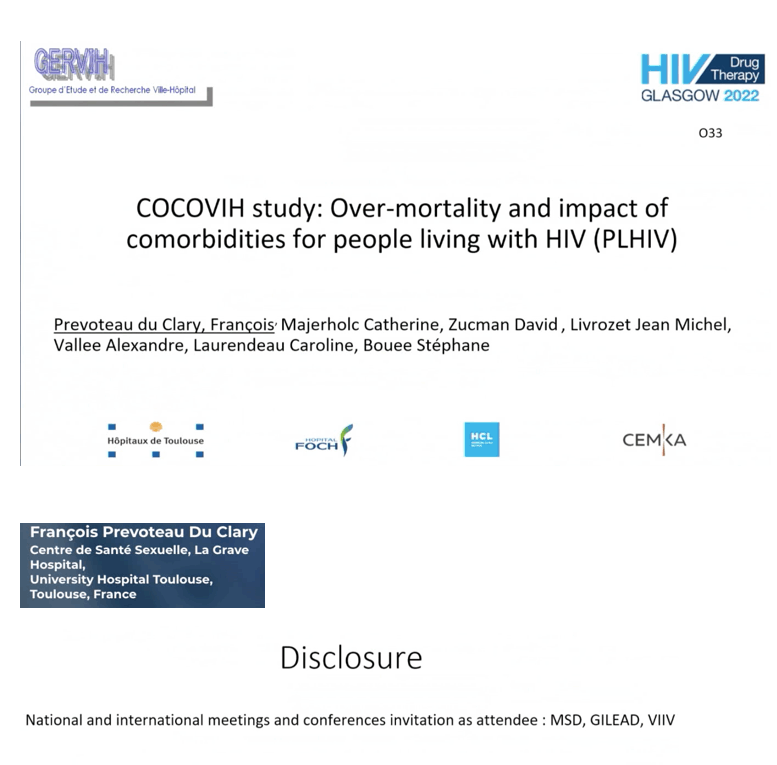
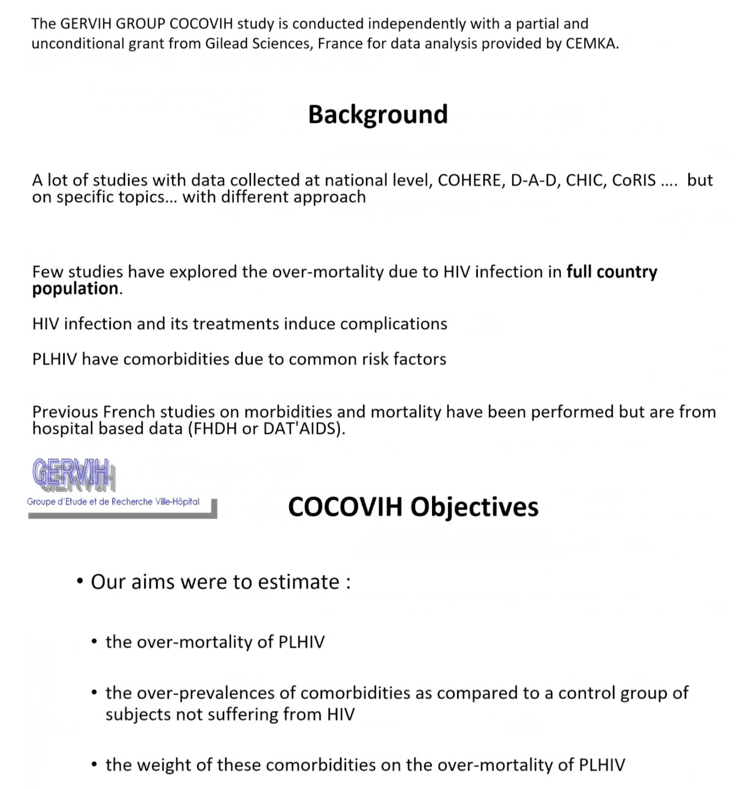
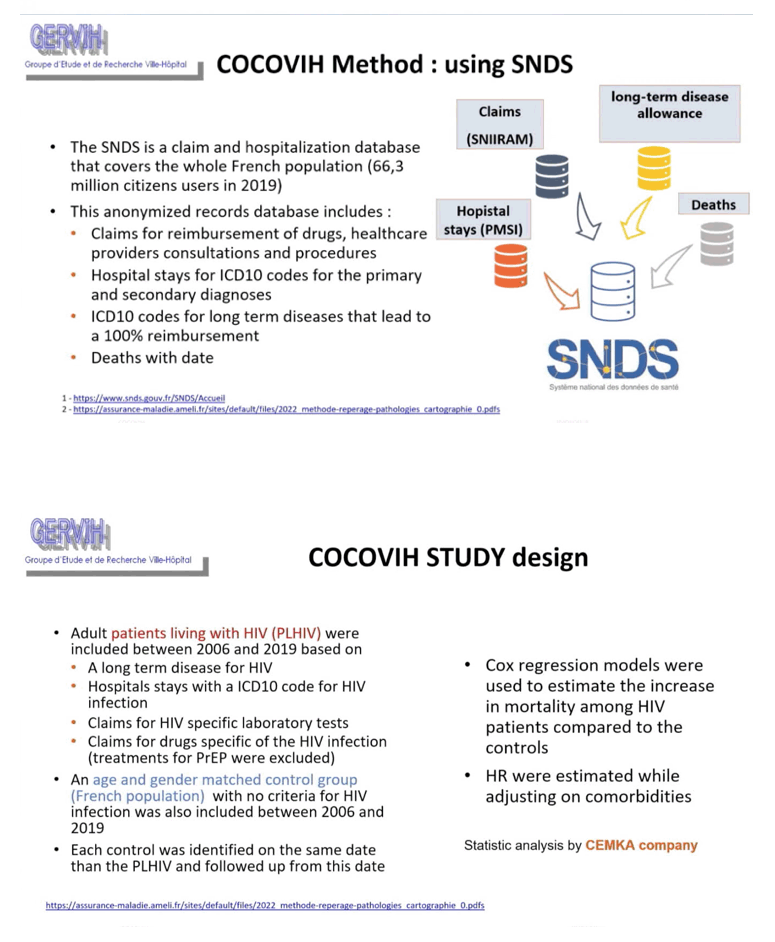
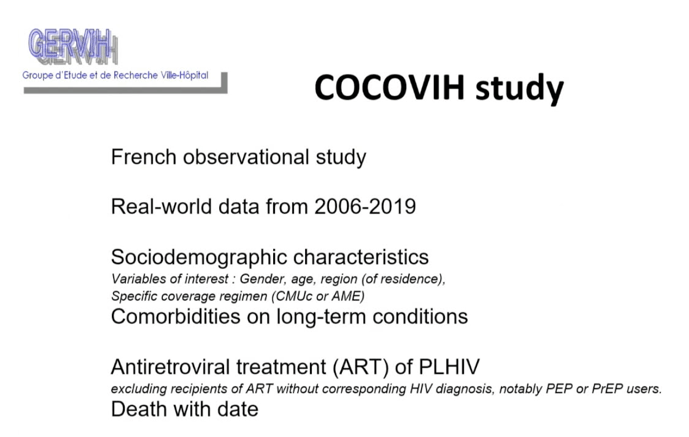
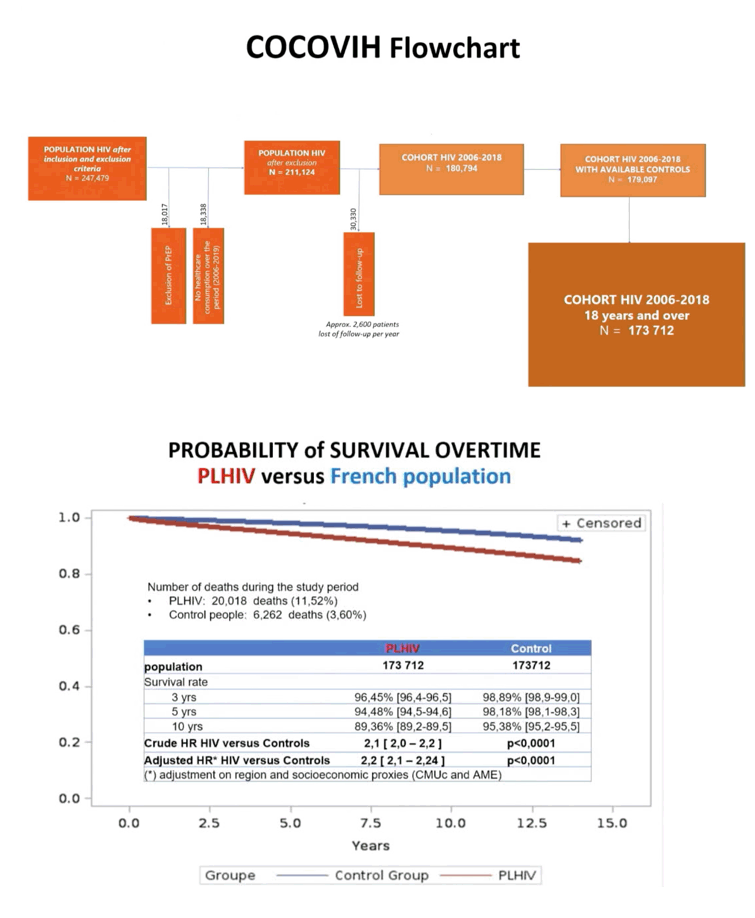
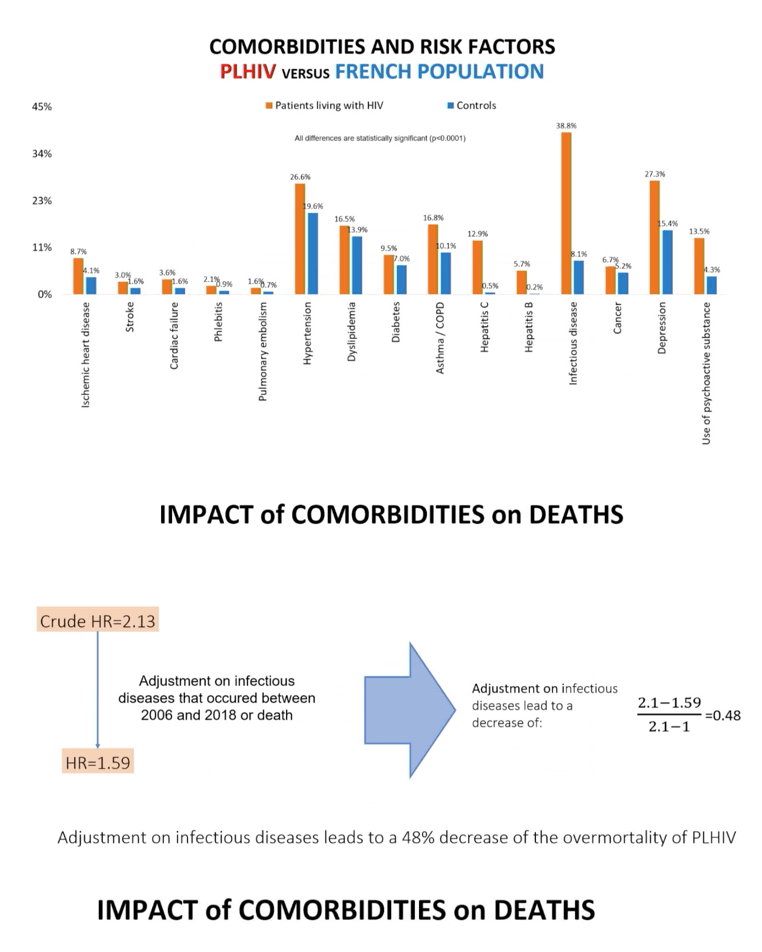
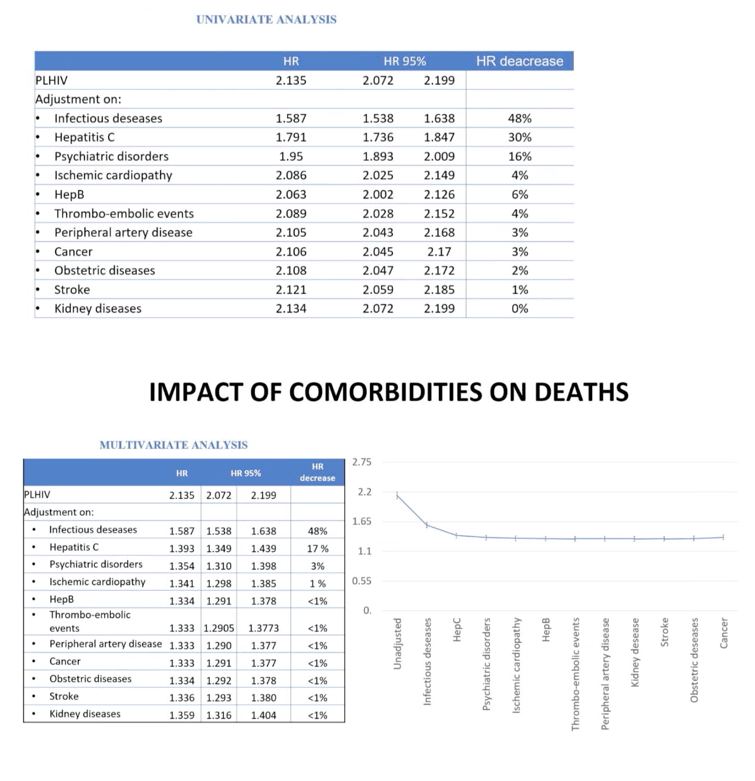
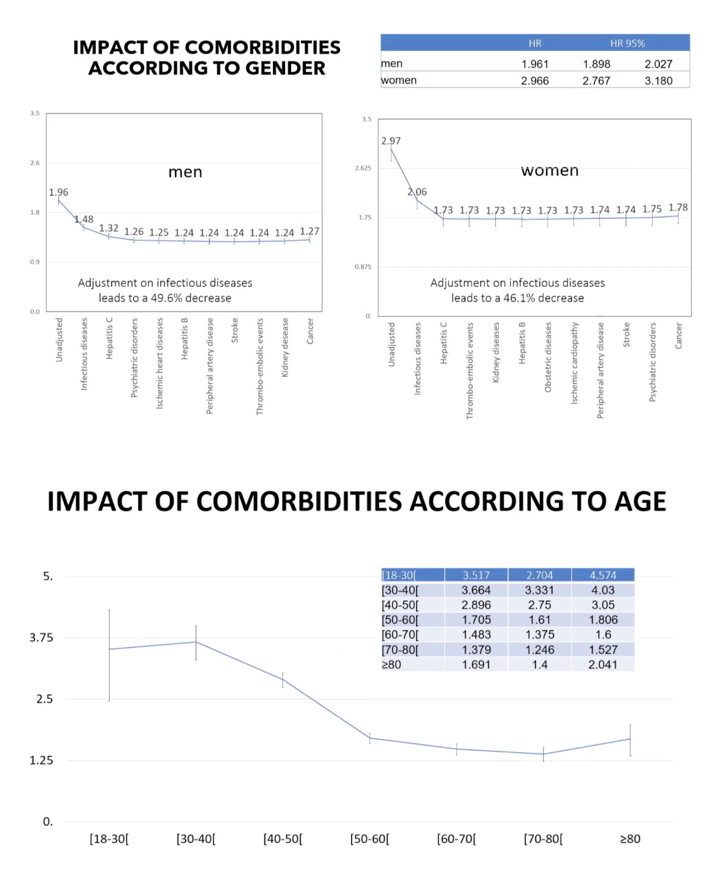
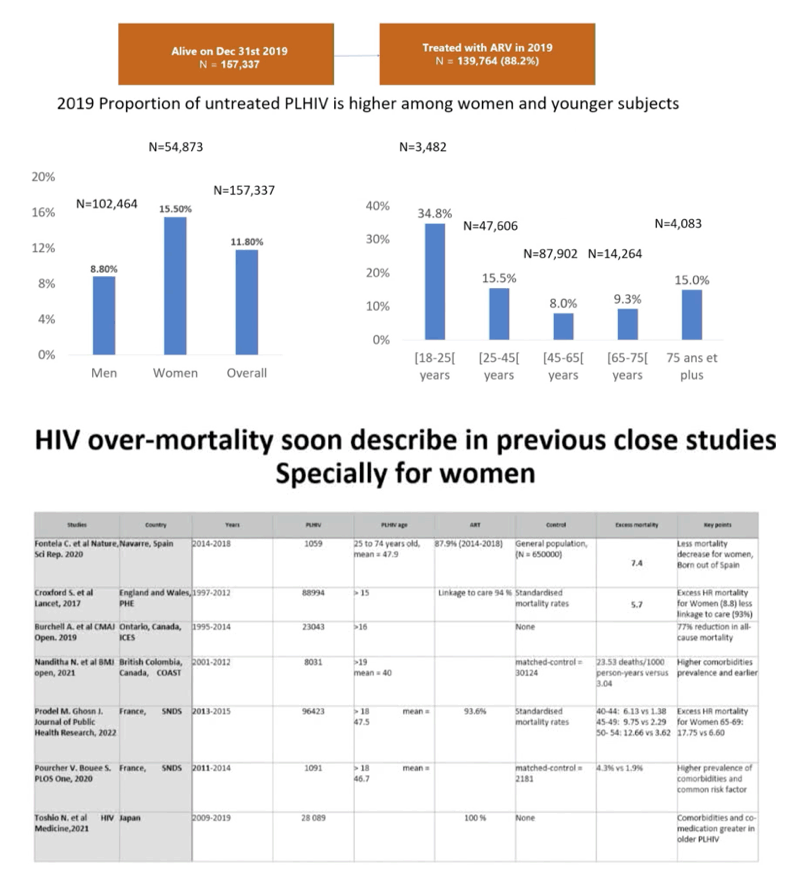
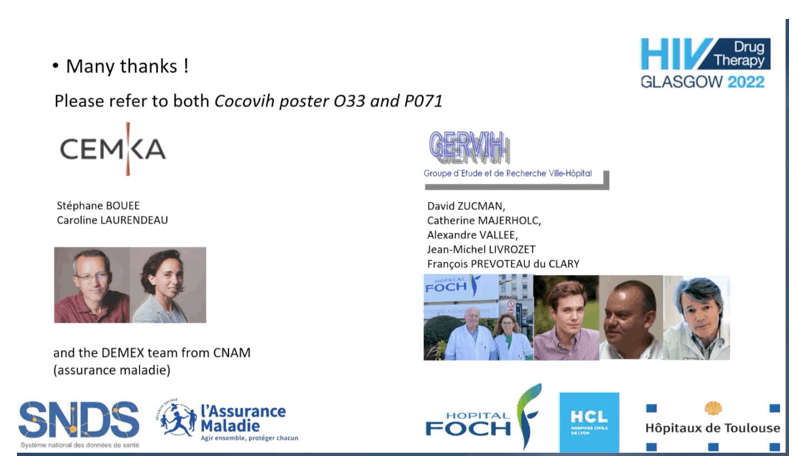
|
| |
|
 |
 |
|
|